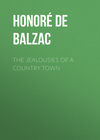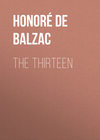Czytaj książkę: «A Short History of French Literature», strona 5
Renart le Contrefait.
The cycle was finally completed in the second quarter of the fourteenth century by the singular work or works called Renart le Contrefait. This has, unfortunately, never been printed in full, nor in any but the most meagre extracts and abstracts. Its length is enormous; though, in the absence of opportunity for examining it, it is not easy to tell how much is common to the three manuscripts which contain it. Two of these are in Paris and one in Vienna, the latter being apparently identical with one which Ménage saw and read in the seventeenth century. One of the Parisian manuscripts contains about 32,000 verses, the other about 19,000; and the Vienna version seems to consist of from 20,000 to 25,000 lines of verse, and about half that number of prose. The author (who, in so far as he was a single person, appears to have been a clerk of Troyes, in Champagne) wrote it, as he says, to avoid idleness, and seems to have regarded it as a vast commonplace book, in which to insert the result not merely of his satirical reflection, but of his miscellaneous reading. A noteworthy point about this poem is that in one place the writer expressly disowns any concealment of his satirical intention. His book, he says, has nothing to do with the kind of fox that kills pullets, has a big brush, and wears a red skin, but with the fox that has two hands and, what is more, two faces under one hood64. Notwithstanding this, however, there are many passages where the old 'common form' of the epic is observed, and where the old personages make their appearance. Indeed their former adventures are sometimes served up again with slight alterations. Besides this there is a certain number of amusing stories and fabliaux, the most frequently quoted of which is the tale of an ugly but wise knight who married a silly but beautiful girl in hopes of having children uniting the advantages of both parents, whereas the actual offspring of the union were as ugly as the father and as silly as the mother. Combined with these things are numerous allusions to the grievances of the peasants and burghers of the time against the upper classes, with some striking legends illustrative thereof, such as the story of a noble dame, who, hearing that a vassal's wife had been buried in a large shroud of good stuff, had the body taken up and seized the shroud to make horsecloths of. This original matter, however, is drowned in a deluge not merely of moralising but of didactic verse of all kinds. The history of Alexander is told in one version by Reynard to the lion king in 7000 verses, and is preluded and followed by an account of the history of the world on a scarcely smaller scale. This proceeding, at least in the Vienna version, seems to be burdensome even to Noble himself, who, at the reign of Augustus, suggests that Reynard should exchange verse for prose, and 'compress.' The warning cannot be said to be unnecessary: but works as long as Renart le Contrefait, and, as far as it is possible to judge, not more interesting, have been printed of late years; and it is very much to be wished that the publication of it might be undertaken by some competent scholar.
Fauvel.
Renart is not the only bestial personage who was made at this time a vehicle of satire. In the days of Philippe le Bel a certain François de Rues composed a poem entitled Fauvel, from the name of the hero, a kind of Centaur, who represents vice of all kinds. The direct object of the poem was to attack the pope and the clergy.
Some extracts from the Fabliau of the Partridges and from Renart may appropriately now be given: —
Por ce que fabliaus dire sueil,
en lieu de fable dire vueil
une aventure qui est vraie,
d'un vilain qui delés sa haie
prist deus pertris par aventure.
en l'atorner mist moult sa cure;
sa fame les fist au feu metre.
ele s'en sot bien entremetre:
le feu a fait, la haste atorne.
et li vilains tantost s'en torne,
por le prestre s'en va corant.
mais au revenir targa tant
que cuites furent les pertris.
la dame a le haste jus mis,
s'en pinça une pelëure,
quar molt ama la lechëure,
quant diex li dona a avoir.
ne bëoit pas a grant avoir,
mais a tos ses bons acomplir.
l'une pertris cort envaïr:
andeus les eles en menjue.
puis est alee en mi la rue
savoir se ses sires venoit.
quant ele venir ne le voit,
tantost arriere s'en retorne,
et le remanant tel atorne
mal du morsel qui remainsist.
adonc s'apenssa et si dist
que l'autre encore mengera.
moult tres bien set qu'ele dira,
s'on li demande que devindrent:
ele dira que li chat vindrent,
quant ele les ot arrier traites;
tost li orent des mains retraites,
et chascuns la seue en porta.
* * * * * *
Tant dura cele demoree
que la dame fu saoulee,
et li vilains ne targa mie:
a l'ostel vint, en haut s'escrie
'diva, sont cuites les pertris?'
'sire,' dist ele. 'ainçois va pis,
quar mengies les a li chas.'
li vilains saut isnel le pas,
seure li cort comme enragiés.
ja li ëust les iex sachiés,
quant el crie 'c'est gas, c'est gas.
fuiiés,' fet ele, 'Sathanas!
couvertes sont por tenir chaudes.'
(He accepts the excuse; bids her lay the table, and goes to sharpen his knife. The priest arrives. She tells him that her husband is plotting outrage against him, and as a proof shows him sharpening his knife. The priest flies, and she tells her husband that he has run off with the partridges. The husband pursues, but in vain, and the Fabliau thus concludes: – )
A l'ostel li vilains retorne,
et lors sa feme en araisone:
'diva,' fait il, 'et quar me dis
coment tu perdis les pertris?'
cele li dist 'se diex m'aït,
tantost que li prestres me vit,
si me prïa, se tant l'amasse,
que je les pertris li moustrasse,
quar moult volentiers les verroit
et je le menai la tout droit
ou je les avoie couvertes.
il ot tantost les mains ouvertes,
si les prist et si s'en fuï.
mes je gueres ne le sivi,
ains le vous fis moult tost savoir.'
cil respont 'bien pués dire voir
or le laissons a itant estre.'
ainsi fu engingniés le prestre
et Gombaus qui les pertris prist.
par example cis fabliaus dist:
fame est faite por decevoir.
mençonge fait devenir voir
et voir fait devenir mençonge.
cil n'i vout metre plus d'alonge
qui fist cest fablel et ces dis.
ci faut li fabliaus des pertris.
(Reynard and Isengrin go a-fishing.)
Ce fu un poi devant Noël
que l'en metoit bacons en sel,
li ciex fu clers et estelez,
et li vivier fu si gelez,
ou Ysengrin devoit peschier,
qu'on pooit par desus treschier,
fors tant c'un pertuis i avoit,
qui des vilains faiz i estoit,
ou il menoient lor atoivre
chascune nuit juër et boivre:
un seel i estoit laissiez.
la vint Renarz toz eslaissiez
et son compere apela.
'sire,' fait il, 'traiiez vos ça:
ci est la plenté des poissons
et li engins ou nos peschons
les anguiles et les barbiaus
et autres poissons bons et biaus.'
dist Ysengrins 'sire Renart,
or le prenez de l'une part,
sel me laciez bien a la qeue.'
Renarz le prent et si li neue
entor la qeue au miex qu'il puet.
'frere,' fait il, 'or vos estuet
moult sagement a maintenir
por les poissons avant venir.'
lors s'est en un buisson fichiez:
si mist son groing entre ses piez
tant que il voie que il face.
et Ysengrins est seur la glace
et li sëaus en la fontaine
plains de glaçons a bone estraine.
l'aive conmence a englacier
et li sëaus a enlacier
qui a la qeue fu noëz:
de glaçons fu bien serondez.
la qeue est en l'aive gelee
et en la glace seelee.
This chapter would be incomplete without a reference to the Ysopet of Marie de France65, which may be said to be a link of juncture between the Fabliau and the Roman du Renart. Ysopet (diminutive of Aesop) became a common term in the middle ages for a collection of fables. There is one known as the Ysopet of Lyons, which was published not long ago66; but that of Marie is by far the most important. It consists of 103 pieces, written in octosyllabic couplets, with moralities, and a conclusion which informs us that the author wrote it 'for the love of Count William' (supposed to be Long-Sword), translating it from an English version of a Latin translation of the Greek. Marie's graceful style and her easy versification are very noticeable here, while her morals are often well deduced and sharply put. The famous 'Wolf and Lamb' will serve as a specimen.
Ce dist dou leu e dou aignel,
qui beveient a un rossel:
li lox a lo sorse beveit
e li aigniaus aval esteit.
irieement parla li lus
ki mult esteit cuntralïus;
par mautalent palla a lui:
'tu m'as,' dist il, 'fet grant anui.'
li aignez li ad respundu
'sire, eh quei?' 'dunc ne veis tu?
tu m'as ci ceste aigue tourblee:
n'en puis beivre ma saolee.
autresi m'en irai, ce crei,
cum jeo ving, tut murant de sei.'
li aignelez adunc respunt
'sire, ja bevez vus amunt:
de vus me vient kankes j'ai beu.'
'qoi,' fist li lox, 'maldis me tu?'
l'aigneus respunt 'n'en ai voleir.'
lous li dit 'jeo sai de veir:
ce meïsme me fist tes pere
a ceste surce u od lui ere,
or ad sis meis, si cum jeo crei.'
'qu'en retraiez,' feit il, 'sor mei?
n'ere pas nez, si cum jeo cuit.'
'e cei pur ce,' li lus a dit:
'ja me fais tu ore cuntraire
e chose ke tu ne deiz faire.'
dunc prist li lox l'engnel petit,
as denz l'estrangle, si l'ocit.
Moralité
Ci funt li riche robëur,
li vesconte e li jugëur,
de ceus k'il unt en lur justise.
fausse aqoison par cuveitise
truevent assez pur eus cunfundre.
suvent les funt as plaiz semundre,
la char lur tolent e la pel,
si cum li lox fist a l'aingnel.
CHAPTER VI
EARLY LYRICS
Early and Later Lyrics.
The lyric poetry of the middle ages in France divides itself naturally into two periods, distinguished by very strongly marked characteristics. The end of the thirteenth century is the dividing point in this as in many other branches of literature. After that we get the extremely interesting, if artificial, forms of the Rondeau and Ballade, with their many varieties and congeners. With these we shall not busy ourselves in the present chapter. But the twelfth and thirteenth centuries are provided with a lyric growth, less perfect indeed in form than that which occupied French singers from Machault to Marot, but more spontaneous, fuller of individuality, variety, and vigour, and scarcely less abundant in amount.
Origins of Lyric.
Romances and Pastourelles.
Before the twelfth century we find no traces of genuine lyrical work in France. The ubiquitous Cantilenae indeed again make their appearance in the speculations of literary historians, but here as elsewhere they have no demonstrable historical existence. Except a few sacred songs, sometimes, as in the case of Saint Eulalie, in early Romance language, sometimes in what the French call langue farcie, that is to say, a mixture of French and Latin, nothing regularly lyrical is found up to the end of the eleventh century. But soon afterwards lyric work becomes exceedingly abundant. This is what forms the contents of Herr Karl Bartsch's delightful volume of Romanzen und Pastourellen67. These are the two earliest forms of French lyric poetry. They are recognised by the Troubadour Raimon Vidal as the special property of the Northern tongue, and no reasonable pretence has been put forward to show that they are other than indigenous. The tendency of both is towards iambic rhythm, but it is not exclusively manifested as in later verse. It is one of the most interesting things in French literary history to see how early the estrangement of the language from the anapaestic and dactylic measures natural to Teutonic speech began to declare itself68. These early poems bubble over with natural gaiety, their refrains, musical though semi-articulate as they are, are sweet and manifold in cadence, but the main body of the versification is either iambic or trochaic (it was long before the latter measure became infrequent), and the freedom of the ballad-metres of England and Germany is seldom present. The Romance differs in form and still more in subject from the Pastourelle, and both differ very remarkably from the form and manner of Provençal poetry. It has been observed by nearly all students, that the love-poems of the latter language are almost always at once personal and abstract in subject. The Romance and the Pastourelle, on the contrary, are almost always dramatic. They tell a story, and often (though not always in the case of the Pastourelle) they tell it of some one other than the singer. The most common form of the Romance is that of a poem varying from twenty lines long to ten times that length and divided into stanzas. These stanzas consist of a certain number (not usually less than three or more than eight) of lines of equal length capped with a refrain in a different metre. By far the best, though by no means the earliest, of them are those of Audefroy le Bastard, who, according to the late M. Paulin Paris, may be fixed at the beginning of the thirteenth century. Audefroy's poems are very much alike in plan, telling for the most part how the course of some impeded true love at last ran smooth. They rank with the very best mediaeval poetry in colour, in lively painting of manners and feelings, and in grace of versification. Unfortunately they are one and all rather too long for quotation here. The anonymous Romance of 'Bele Erembors' will represent the class well enough. The rhyme still bears traces of assonance, which is thought to have prevailed till Audefroy's time: —
Quant vient en mai, que l'on dit as lons jors,
Que Frans en France repairent de roi cort,
Reynauz repaire devant el premier front
Si s'en passa lez lo mes Arembor,
Ainz n'en designa le chief drecier a mont.
E Raynaut amis!
Bele Erembors a la fenestre au jor
Sor ses genolz tient paile de color;
Voit Frans de France qui repairent de cort,
E voit Raynaut devant el premier front:
En haut parole, si a dit sa raison.
E Raynaut amis!
'Amis Raynaut, j'ai ja veu cel jor
Se passisoiz selon mon pere tor,
Dolanz fussiez se ne parlasse a vos.'
'Ja mesfaistes, fille d'Empereor,
Autrui amastes, si obliastes nos.'
E Raynaut amis!
'Sire Raynaut, je m'en escondirai:
A cent puceles sor sainz vos jurerai,
A trente dames que avuec moi menrai,
C'onques nul hom fors vostre cors n'amai.
Prennez l'emmende et je vos baiserai.'
E Raynaut amis!
Li cuens Raynauz en monta lo degre,
Gros par espaules, greles par lo baudre;
Blonde ot lo poil, menu, recercele:
En nule terre n'ot so biau bacheler.
Voit l'Erembors, so comence a plorer.
E Raynaut amis!
Li cuens Raynauz est montez en la tor,
Si s'est assis en un lit point a flors,
Dejoste lui se siet bele Erembors.
* * * * * *
Lors recomencent lor premieres amors.
E Raynaut amis!
The Pastourelle is still more uniform in subject. It invariably represents the knight or the poet riding past and seeing a fair shepherdess by his road-side. He alights and woos her with or without success. In this class of poem the stanzas are usually longer, and consist of shorter lines than is the case with the Romances, while the refrains are more usually meaningless though generally very musical. It is, however, well to add that the very great diversity of metrical arrangement in this class makes it impossible to give a general description of it. There are Pastourelles consisting merely of four-lined stanzas with no refrain at all. The following is a good specimen of the class: —
De Saint Quentin a Cambrai
Chevalchoie l'autre jour;
Les un boisson esgardai,
Touse i vi de bel atour.
La colour
Ot freche com rose en mai.
De cuer gai
Chantant la trovai
Ceste chansonnete
'En non deu, j'ai bel ami,
Cointe et joli,
Tant soie je brunete.'
Vers la pastoure tornai
Quant la vi en son destour;
Hautement la saluai
Et di 'deus vos doinst bon jour
Et honour.
Celle ke ci trove ai,
Sens delai
Ses amis serai.'
Dont dist la doucete
'En non deu, j'ai bel ami,
Cointe et joli,
Tant soie je brunete.'
Deles li seoir alai
Et li priai de s'amour,
Celle dist 'Je n'amerai
Vos ne autrui par nul tour,
Sens pastour,
Robin, ke fiencie l'ai.
Joie en ai,
Si en chanterai
Ceste chansonnete:
En non deu, j'ai bel ami,
Cointe et joli,
Tant soie je brunete.'
So various, notwithstanding the simplicity and apparent monotony of their subjects, are these charming poems, that it is difficult to give, by mere citation of any one or even of several, an idea of their beauty. In no part of the literature of the middle ages are its lighter characteristics more pleasantly shown. The childish freedom from care and afterthought, the half unconscious delight in the beauty of flowers and the song of birds, the innocent animal enjoyment of fine weather and the open country, are nowhere so well represented. Chaucer may give English readers some idea of all this, but even Chaucer is sophisticated in comparison with the numerous, and for the most part nameless, singers who preceded him by almost two centuries in France. As a purely formal and literary characteristic, the use of the burden or refrain is perhaps their most noteworthy peculiarity. Herr Bartsch has collected five hundred of these refrains, all different. There is nothing like this to be found in any other literature; and, as readers of Béranger know, the fashion was preserved in France long after it had been given up elsewhere.
Thirteenth Century.
Changes in Lyric.
After the twelfth century the early lyrical literature of France undergoes some changes. In the first place it ceases to be anonymous, and individual singers – some of them, like Thibaut of Champagne, of very great merit and individuality – make their appearance. In the second place it becomes more varied but at the same time more artificial in form, and exhibits evident marks of the communication between troubadour and trouvère, and of the imitation by the latter of the stricter forms of Provençal poetry. The Romance and the Pastourelle are still cultivated, but by their side grow up French versions, often adapted with considerable independence, of the forms of the South69. Such, for instance, is the chanson d'amour, a form less artfully regulated indeed than the corresponding canzon or sestine of the troubadours, but still of some intricacy. It consists of five or six stanzas, each of which has two interlaced rhymes, and concludes with an Envoi, which, however, is often omitted. Chansonnettes on a reduced scale are also found. In these pieces the alternation of masculine and feminine rhymes, which was ultimately to become the chief distinguishing feature of French prosody, is observable, though it is by no means universal. To the Provençal tenson corresponds the jeu parti or verse dialogue, which is sometimes arranged in the form of a Chanson. The salut d'amour is a kind of epistle, sometimes of very great length and usually in octosyllabic verse, the decasyllable being more commonly used in the Chanson. Of this the complainte is only a variety. Again, the Provençal sirvente is represented by the northern serventois, a poem in Chanson form, but occupied instead of love with war, satire, religion, and miscellaneous matters. It has even been doubted whether the serventois is not the forerunner of the sirvente instead of the reverse being the case. Other forms are motets, rotruenges, aubades. Poems called rondeaux and ballades also make their appearance, but they are loose in construction and undecided in form. The thirteenth century is, moreover, the palmy time of the Pastourelle. Most of those which we possess belong to this period, and exhibit to the full the already indicated characteristics of that graceful form. But the lyric forms of the thirteenth century are to some extent rather imitated than indigenous, and it is no doubt to the fact of this imitation that the common ascription of general poetical priority to the Langue d'Oc, unfounded as it has been sufficiently shown to be, is due in the main. The most courageous defenders of the North have wished to maintain its claims wholly intact even in this instance, but probability, if not evidence, is against them.
Traces of Lyric in the Thirteenth Century.
Quesnes de Bethune.
Thibaut de Champagne.
It has been said that the number of song writers from the end of the twelfth century to the end of the thirteenth is extremely large. M. Paulin Paris, whose elaborate chapter in the Histoire Littéraire is still the great authority on the subject, has enumerated nearly two hundred, to whose work have to be added hundreds of anonymous pieces. It would seem indeed that during a considerable period the practice of song writing was almost as incumbent on the French gentleman of the thirteenth century as that of sonnetteering on the English gentleman of the sixteenth. There are, however, not a few names which deserve separate notice. The first of these in point of time, and not the last in point of literary importance, is that of Quesnes de Bethune, the ancestor of Sully, and himself a famous warrior, statesman, and poet. His epitaph by a poet not usually remarkable for eloquence70 is a very striking one. It gives us approximately the date of his death, 1224; and the word vieux is supposed to show that Quesnes must have been born at least as early as the middle of the twelfth century. He took part in two crusades, that of Philip Augustus and that which Villehardouin has chronicled. His poems71 are of all classes, historical, satirical, and amorous, some of last being addressed to Marie, Countess of Champagne; and his Chansons are, in the technical sense, some of the earliest we possess. Contemporary with Quesnes apparently was the personage who is known under the title of Châtelain de Coucy, and whose love for the Lady of Fayel resulted in an interchange of very tender and beautiful verse; the poem known as the lady's own is one of the very best of its kind. Long afterwards lover and lady became the hero and heroine of a romance, which has led some persons to throw doubt upon their historical existence, and the Lady of Fayel has even been deprived of her poem by a well-known kind of criticism. Of more importance is Thibaut de Champagne, King of Navarre, who is indeed the most important single figure of early French lyrical poetry. He was born in 1201, and died in 1253. His high position as a feudal prince in both north and south, the minority of St. Louis, and the intimate relations which existed between the King's mother, Blanche of Castille, and Thibaut, made him the mark for a good deal of satirical invective. There is a tradition that he was Blanche's lover, the only objection to which is that the Queen was thirty years his senior. Thibaut's poems have been more than once reprinted, the last edition being that of M. Tarbé72; this contains eighty-one pieces, not a few of which, however, are probably the work of others. The majority of them are Chansons d'Amour, of the kind just defined. There are, however, a good many Jeux-Partis, and a certain number of nondescript poems on miscellaneous subjects. There is more reason for the common opinion which attributes to Thibaut the marriage of the poetical qualities of northern and southern France, than the mere fact of his having been both Count of Champagne and King of Navarre. His poems have in reality something of the freshness and the individuality of the Trouvères, mixed with a great deal of the formal grace and elegance of the Troubadours. The following may serve as an example: —
Contre le tens qui desbrise
Yvers, et revient este,
Et la mauvis se desguise,
Qui de lonc tens n'a chante
Ferai chanson. Car a gre
Me vient que j'aie en pense
Amor, qui en moi s'est mise.
Bien m'a droit son dart gete.
Douce dame, de franchise,
N'ai je point en vos trove:
S'ele ne s'i est puis mise
Que je ne vos esgarde,
Trop avez vers moi fierte.
Mais ce fait vostre biaute,
Ou il n'i a pas de devise,
Tant en i a grand plante.
En moi n'a point d'astenance
Que je puisse aillors penser,
Pors que la, ou conoissance
Ne merci ne puis trover.
Bien fui fait por li amer;
Car ne m'en puis saoler.
Et quant plus aurai cheance,
Plus la me convendra douter.
D'une riens sui en doutance,
Que je ne puis plus celer,
Qu'en li n'ait un po d'enfance.
Ce me fait deconforter,
Que s'a moi a bon penser
Ne l'ose ele desmontrer.
Si feist qu'a sa semblance
Le poisse deviner.
Des que je li fis priere
Et la pris a esgarder,
Me fist amors la lumiere
Des iels par le cuer passer.
Cil conduit me fait grever:
Dont je ne me soi garder:
Ne ne puet torner arriere
Mon cuer; miex voudrait crever.
Dame, a vos m'estuet clamer,
Et que merci vos requiere.
Diex m'i laist pitie trover!
Minor Singers.
Adam de la Halle.
Besides Thibaut there are not a few other song writers of the thirteenth century, who rise out of the crowd named by M. Paulin Paris. Some of these, as might be expected, are famous for their achievements in other departments of literature. Such are Adam de la Halle, Jean Bodel, Guyot de Provins. There are, however, two, Gace Brulé and Colin Muset, who survive solely but worthily as song writers. Gace Brulé was a knight of Champagne, Colin Muset a professed minstrel. The former chiefly composed sentimental work; the latter, with the proverbial or professional gaiety of his class, drew nearer to the satirical tone of the Fabliau writers. His best-known and most usually quoted work describes the different welcome which he receives from his family on his return from professional tours, according to the success or ill-success with which he has met. Two other poets, Adam de la Halle and Rutebœuf, are far more prominent in literary history. Adam de la Halle73 bore the surname 'Le Bossu d'Arras,' from his native town, though the term hunchback seems to have had no literal application to him. His exact date is not known, but it must probably have been from the fourth to the ninth decade of the thirteenth century. His dramatic works, which are of signal importance, will be noticed elsewhere. But besides these he has left some seventy or eighty lyrical pieces of one kind or another. Adam's life was not uneventful; he was at first a monk, but left his convent and married. Then he proved as faithless to his temporal as he had been to his spiritual vows. He lampooned his wife, his family, his townsmen, and, shaking the dust of Arras from his feet, retired first to Douai and then to the court of Robert of Artois, whom he accompanied to Italy. He died in that country about 1288. The style of Adam de la Halle varies from the coarsest satire to the most graceful tenderness. Of the latter the following song is a good specimen: —
Diex!
Comment porroie
Trouver voie
D'aler a chelui
Cui amiete je sui?
Chainturelle, va-i
En lieu de mi;
Car tu fus sieue aussi,
Si m'en conquerra miex.
Mais comment serai sans ti?
Dieus!
Chainturelle, mar vous vi;
Au deschaindre m'ochies;
De mes grietes a vous me confortoie,
Quant je vous sentoie,
Ai mi!
A le saveur de mon ami.
Ne pour quant d'autres en ai,
A cleus d'argent et de soie,
Pour men user.
Mais lasse! comment porroie
Sans cheli durer
Qui me tient en joie?
Canchonnete, chelui proie
Qui le m'envoya,
Puis que jou ne puis aler la.
Qu'il en viengne a moi,
Chi droit,
A jour failli,
Pour faire tous ses boins,
Et il m'orra,
Quant il ert joins,
Canter a haute vois:
Par chi va la mignotise,
Par chi ou je vois.
Rutebœuf
Rutebœuf (whose name appears to be a nickname only) has been more fortunate than most of the poets of early France in leaving a considerable and varied work behind him, and in having it well and collectively edited74. Little or nothing, however, is known about him, except from allusions in his own verse. He was probably born about 1230; he was certainly married in 1260; there is no allusion in his poems to any event later than 1285. By birth he may have been either a Burgundian or a Parisian. His work which, as has been said, is not inconsiderable in volume, falls into three well-marked divisions in point of subject. The first consists of personal and of comic poems; the second of poems sometimes satirical, sometimes panegyrical, on public personages and events; the third, which is apparently with reason assigned to the latest period of his life, of devotional poems. In the first division La Pauvreté Rutebœuf, Le Mariage Rutebœuf, etc., are complaints of his woeful condition; complaints, however, in which there is nearly as much satire as appeal. Others, such as Renart le Bestourné, Le Dit des Cordeliers, Frère Denise, Le Dit de l'Erberie, are poems of the Fabliau kind. In all these there are many lively strokes of satire, and not a little of the reckless gaiety, chequered here and there with deeper feeling, which has always been a characteristic of a certain number of French poets. Rutebœuf's sarcasm is especially directed towards the monastic orders. The second class of poems, which is numerous, displays a more elevated strain of thought. Many of these poems are complaintes or elaborate elegies (often composed on commission) for distinguished persons, such as Geoffroy de Sargines and Guillaume de Saint Amour. Others, such as the Complainte d'Outremer, the Complainte de Constantinople, the Dit de la Voie de Tunes, the Débat du Croisé et du Décroisé, are comments on the politics and history of the time, for the most part strongly in favour of the crusading spirit, and reproaching the nobility of France with their degeneracy. 'Mort sont Ogier et Charlemagne' is an often-quoted exclamation of Rutebœuf in this sense. The third class includes La Mort Rutebœuf, otherwise La Repentance Rutebœuf, La Voie de Paradis, various poems to the Virgin, the lives of St. Mary of Egypt and St. Elizabeth of Hungary, and the miracle play of Théophile. Rutebœuf's favourite metres are either the continuous octosyllabic couplet, or else a stanza composed of an octosyllabic couplet and a line of four syllables, the termination of the latter being caught up by the succeeding couplet. In this the Mariage is written, of which a specimen may be given: —
En l'an de l'incarnacïon,
VIII jors aprés la nascïon
Jhesu qui soufri passïon,
en l'an soissante,
qu'arbres n'a foille, oisel ne chante,
fis je toute la rien dolante
que de cuer m'aime:
nis li musarz musart me claime.
or puis filer, qu'il me faut traime;
mult ai a faire.
deus ne fist cuer tant de pute aire,
tant li aie fait de contraire
ne de martire,
s'il en mon martire se mire,
qui ne doie de bon cuer dire
'je te claim cuite.'
envoier un home en Egypte,
ceste dolor est plus petite
que n'est la moie;
je n'en puis mais se je m'esmoie.
l'en dit que fous qui ne foloie
pert sa saison:
sui je marïez sanz raison?
or n'ai ne borde ne maison.
encor plus fort:
por plus doner de reconfort
a ceus qui me heent de mort,
tel fame ai prise
que nus fors moi n'aime ne prise,
et s'estoit povre et entreprise,
quant je la pris.
a ci marïage de pris,
c'or sui povres et entrepris
ausi comme ele,
et si n'est pas gente ne bele.
cinquante anz a en s'escuële,
s'est maigre et seche:
n'ai pas paor qu'ele me treche.
despuis que fu nez en la greche
deus de Marie,
ne fu mais tele espouserie.
je sui toz plains d'envoiserie:
bien pert a l'uevre.
Though he has less of the 'lyrical cry' than some others, Rutebœuf is perhaps the most vigorous poet of his time.
Pour renard qui gelines tue,
Qui a la rousse peau vestue,
Qui a grand queue et quatre piés,
N'est pas ce livre communiés;
Mais pour cellui qui a deux mains
Dont il sont en ce siècle mains,
Qui ont sous la chappe Faulx Semblant.
Wolf, Op. cit. p. 5.
The final allusion is to a personage of the Roman de la Rose.
Philippe Mouskès. This is it:
La terre fut pis en cest anQuar li vieux Quesnes estoit mors.
[Закрыть]



















